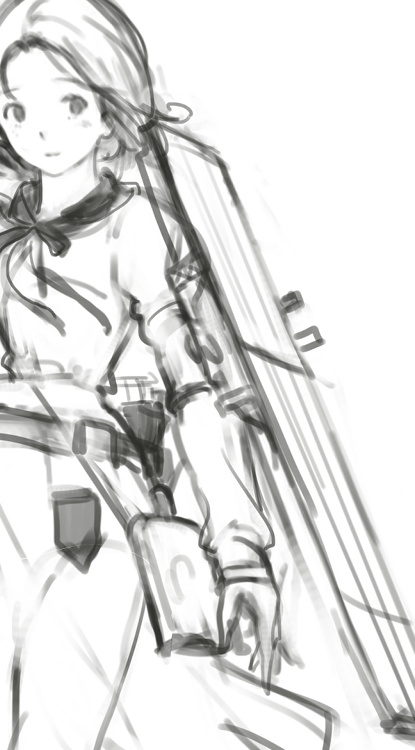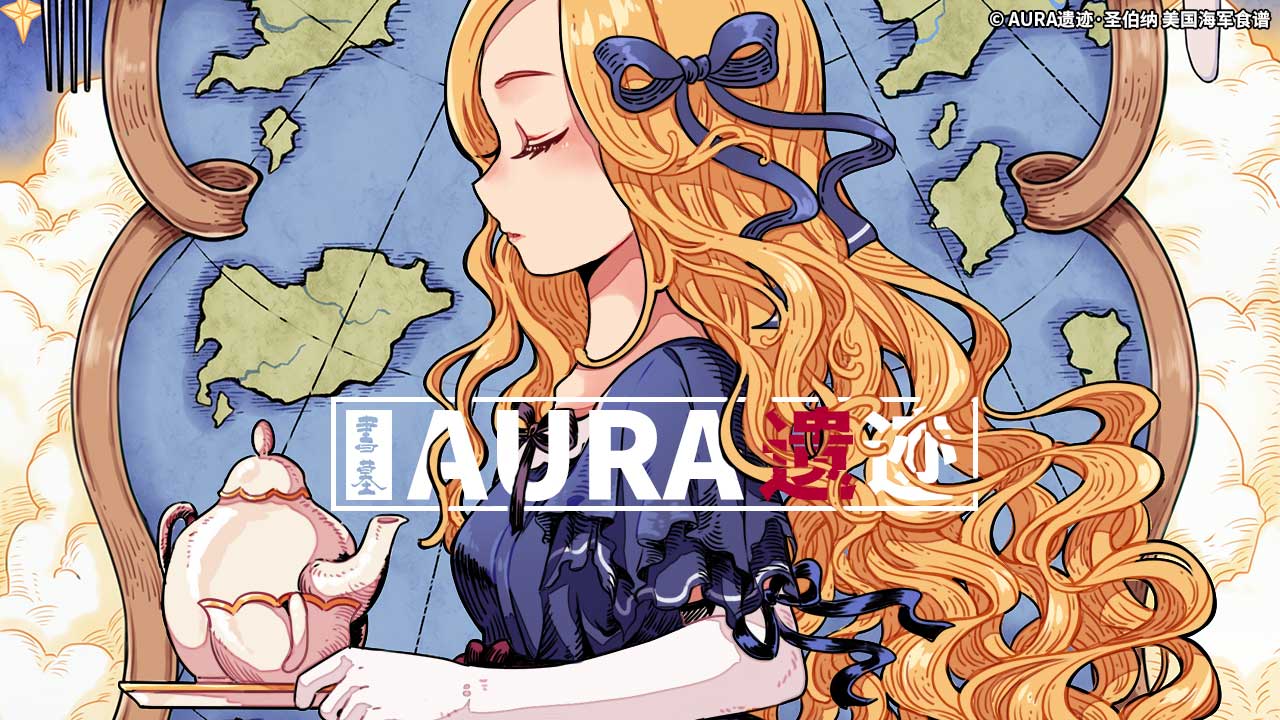Today’s mail call isn’t really answering a question, but again, it’s more like smoothing out some “loose ends.” I honestly feel like I’ve answered this thing before, but, well, you know me at this point. x)
Specifically, of course, I now talk about matters pertaining to shipgirl equipment. With 80 (yes, eighty) characters in Pacific, I think it’s time to look back and consolidate the designs we have. Specifically, I’d like to address a few common comments pertaining to the shipgirls themselves.
Since the upcoming featured book is on Midway, I’ll start with the CV girls instead. Let me clear up a few misconceptions.
First, are CV girls defenseless without their air groups? Yes and no. Certainly they’re at a greater disadvantage (being able to strike from hundreds of miles away is a big bonus), but they wouldn’t be particularly worse if we’re getting into melee range (defined here as basically what you see in the KanColle anime, where shipgirls are shooting at the Abyssals in a ‘cinematic’ fashion). That being said, as I’ve hammered the point again and again, you don’t need to shoot an Abyssal at a range where they’re considerably more dangerous if you can do so at a much safer distance. There is absolutely zero reason here for STEC to want to risk the lives of their shipgirls – no matter how badly some shipgirls might want to fight.
Secondly, how are planes launched in Pacific? I’ve seen people actually argue it both ways – launching magical planes out bow-and-arrow style or using the actual carrier “deck” to do so.
The answer here is that it’s both. A typical sortie order would mean that the CV girl configures her gear and let her fairies do the work inside. Remember that in Pacific, the fairy air-groups are more or less toy-sized until they launch, where they undergo a rapid transformation into their “full” size counterparts.
Now, what happens if a CV girl shoots a plane out directly from her personal weapon? The effect would be largely analogous to throwing it. Simply put, the plane itself might come out a bit rougher in shape, but the extraordinary acceleration (or the process of shooting itself) basically improves the plane’s initial acceleration and speed. Naturally, then, it means that it’ll reach its combat altitude/speeds faster as a result. STEC isn’t sure of the precise mechanism, but a popular theory is basically that the shipgirl’s providing a bit of her own (immense) powers into the planes themselves.
(Sune’s asked before about what happens if they shoot a plane at an Abyssal. The answer? A very big BOOM – it’s not all different from a fairy plane crashing into an Abyssal. STEC’s not particularly clear on this aspect from a doctrinal perspective, and you’ll have commanders telling shipgirls to recover as many planes as they can to bring home for repairs or some that basically tells them to go ahead and blow the bastards up (we’ve got spares)
“So, okay, if it’s better than launching with a deck then why do they still need the flight deck? Why not just make every single launch “manual”?”
Well, for starters, “better” is relative. The direct trade-off here is combat speed versus materiel attrition. It would be very difficult to launch a proper formation, and the chances of the fairy plane blowing up during the process isn’t insubstantial.
Secondly, this particular method of launching planes is not very “stealthy.” The Abyssals can “sense” to a much better degree the shipgirl’s activity if she manually launches her planes. The NKT might not care (and in fact, might encourage it as evidence of adherence to traditionalism), but STEC’s own doctrine of engagement naturally frowns on anything that might be breaking the shipgirl’s concealment.
So, this brings us to the next point. Just exactly what does fairies do? We know so far from things like OCEAN that they build and maintain equipment. However, what do they do?
The answer to that is that they literally crew the shipgirl’s equipment. Again, the manual versus automatic analogy comes in. Enterprise can, with a little bit of effort, “materialize” her planes, load them with the proper munitions, fuel them up, launch. She can activate her radar equipment to search and pinpoint for Abyssals on her own. She can communicate with Mike & the base in real time. She can “steer” her mobile unit on her own. She can recover her planes. She can relay the information from her planes to her allies in the region. Indeed, at any given moment a shipgirl could be doing any number of these things.
Which is why she have her fairies to do that stuff for her. In that sense, a shipgirl isn’t simply an elite infantry or special operator, nor is she really equivalent to a single “ship.” The amount of firepower and supporting elements a single shipgirl brings to the battlefield is closer to something like a taskforce. Think about it. The US navy basically defines a task force as a collection of ships, oftentimes of varying elements and from different divisions, coming together to achieve some tangible battlefield objective. Think about what can each shipgirl do, and think if this analogy makes sense.
Now, when multiple shipgirls come together for a single mission, you can quickly see why some sort of combat information center-equivalent (or, basically, Mike’s job) becomes necessary. While a shipgirl could probably serve as field “commander,” it makes everyone’s lives easier if there is an additional head keeping an eye out on all the new developments that could detail.
This is especially pertinent to CV girls, because they are in essence coordinating multiple air wings in addition to all the other things that they’re supposed to be doing. Simply relegating, say, the feeding of coordinates to Avalon to someone in Avalon rather than herself (or even her flight controlling fairy department) would reduce combat stress tremendously.
“Wait, fairy planes can land on Avalon?”
Yes. In fact, that’s part of why Avalon is useful. Think of it as a literal Midway but is capable of moving about. STEC is working on mid-sortie resupply logistics that enables a CV girl to stay out longer.
“Hold on, so, if the fairy planes are toy-sized why must a CV girl only carry that amount where she could carry “historically?” What’s preventing Mike from ordering Enterprise to carry a literal bucket of F4Fs with her in case she runs out of planes?”
Nothing! It’s just a really bad idea for a few reasons. One, you’d start to burn out fairies if they have to work that much harder. Two, a literal bucket of F4Fs would draw Abyssals like moths to a flame. For some reason STEC doesn’t quite understand, fairy equipment (and fairies) outside of a shipgirl’s equipment (and Avalon) radiates fairy “energy” on an almost exponential level based on how many of them are around. It’s for this reason, too, that STEC doesn’t sortie out all of its shipgirls at a time. Three. A shipgirl already carries a pretty significant portion of “spare part” or equivalents as part of their standard sortie package. If a battle has turned out in such a way that a CV girl’s lost most of her air group against the Abyssals, you have to seriously ask would it be to the mission’s success if she just throw out another bunch?
Believe me, STEC’s tried to figure out ways to improve the sortie efficiency of their shipgirls. If it was safe to do they’d have done it by now. As it stands so far only one of the girls have an additional mechanism for carrying more planes “safely” into battle, and that’s, well, a literal belt of F4U. You’ll meet her in the next book.
“What’s with the actual flight deck being worn on their arms then?”

Ah, I remember that I started to answer this before and decided to call it a night. xD
In short, that’s a configuration meant for fighting humanoid Abyssals or anti-shipgirl Abyssals. We already established that shipgirls have “shields” or “forcefield” equivalents where even direct strikes from the Abyssals themselves can be shrugged off. That is literally a case where they can point the deck towards an opponent and it’ll make a bigger barrier.
Just because STEC frowns upon melee range engagements doesn’t mean the girls aren’t trained to fight at close range. Shipgirl “melee” combat for the CV girls leverage a few things, many of which do involve the flexible nature of their equipment. Remember that in Pacific shipgirl equipment transforms. That flight deck “shield” that they carry can all unfold into a pavise if a CV girl needs a bit more defense as opposed to faster recovery of her planes.
![[Mail Call] 2017/04/15 - Shipgirl Equipment](https://www.stec-hq.com/wp-content/uploads/2020/05/698b1f1fly1fenn1a3rx2j208n0b9abj.jpg)
In this case, you can see, it’s literally a simple ring attached to her arm. The other components of the gear has already retracted/receded/miniaturized.
Remember, from an out of the universe perspective, we prefer to have a largely minimalist design to our shipgirl’s weaponry. Just because the appearance is minimalist doesn’t mean the stuff isn’t there in-universe.
Silent Service’ll give you a pretty good look at just how intricate even the subgirl’s gear are. In the future, we’ll post more detailed plans of what the different “modules” of a shipgirl’s gear might look like. For now, though, we’ll probably drop Yorktown or one of her friends online next week.
Yeah, I think now that we’ve gotten our results back from Boston (positive) AND now that I have translator-volunteers, the English’ll come out at the same time as the other languages. The updates that we do are considerably more regular in English at any rate anyways, so it’ll be a fun change.






![[Mail Call] 2017/04/15 - Shipgirl Equipment](https://www.stec-hq.com/wp-content/uploads/2020/05/698b1f1fly1fenn1a3rx2j208n0b9abj.jpg)